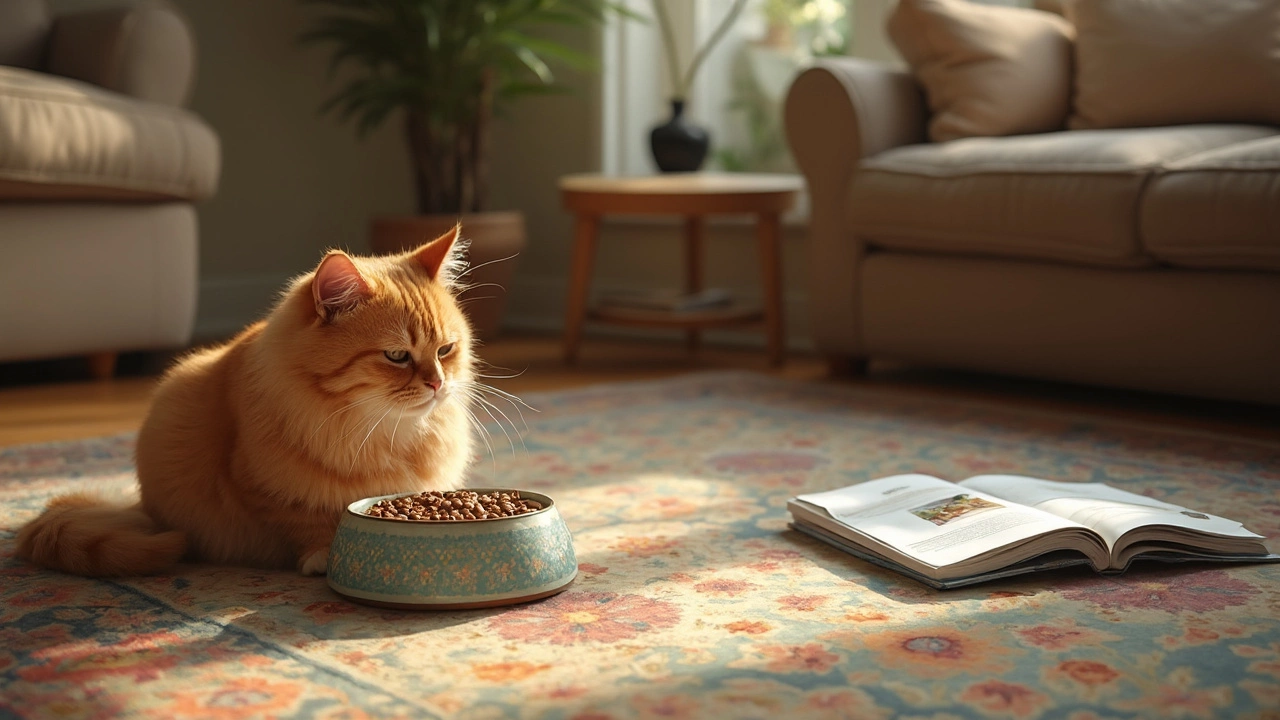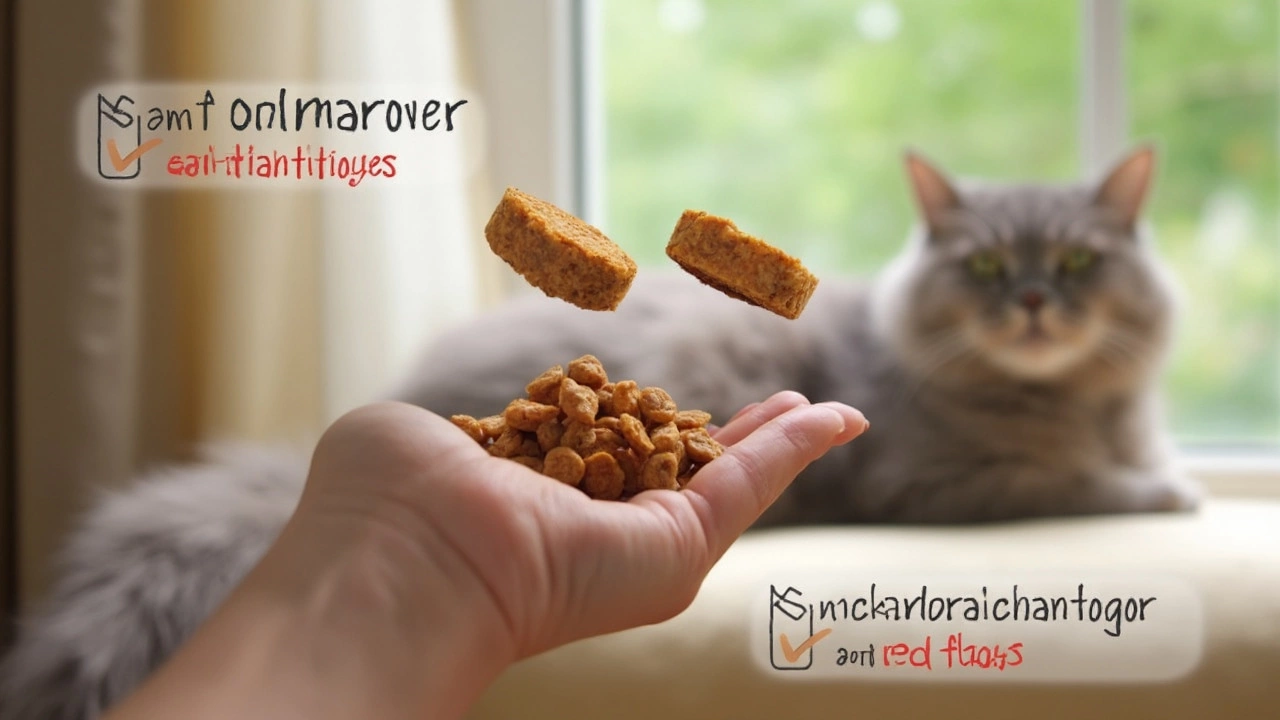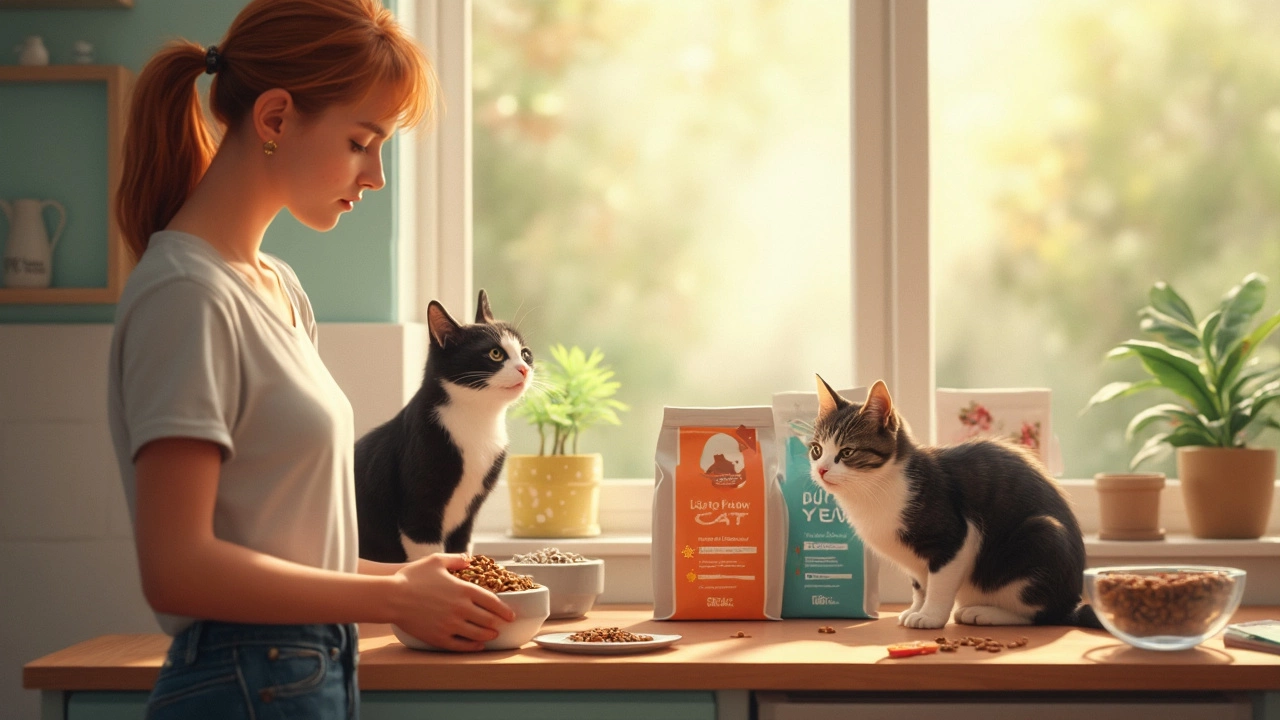Walk down any pet aisle and it’s just bag after bag of dry cat food, each one promising to be “the best.” Thing is, not all kibble is created equal—and your cat can’t exactly tell you which one upsets her stomach or leaves her still hungry. Choosing the right dry cat food goes beyond a flashy package or catchy brand. It’s about real ingredients, smart nutrition, and what actually works for your cat’s health and happiness.
Skip the guesswork by checking the ingredient label first. Aim for a recipe with animal protein (like chicken or salmon) right at the top. Avoid long lists packed with fillers like corn, wheat, or by-products—these don’t do much for your cat, and can lead to weight gain or allergies. A good dry cat food gives your little hunter the protein, fat, and vitamins she needs for energy, shiny fur, and strong muscles—without all the junk that slows her down.
- What Makes a Dry Cat Food the Best?
- Key Ingredients: What to Look For
- The Top 5 Picks and Why They Shine
- Common Questions About Dry Cat Food
- Switching Foods: Simple Steps for Success
What Makes a Dry Cat Food the Best?
So what actually separates the best dry cat food from the stuff that just fills your cat’s bowl? It really comes down to what’s inside that bag and how it fits with your cat’s needs. Not all cats are the same, but some basics apply across the board.
The first thing to check is protein quality. Cats are obligate carnivores, which means they need meat. You want to see a named animal like chicken, turkey, or salmon listed as the first ingredient. This supplies plenty of high-quality protein to support muscle, energy, and overall health. A bland label that just says “meat meal” could mean anything—way less trustworthy.
Next, check for unnecessary fillers. Ingredients like corn, soy, and wheat aren’t bad in small amounts, but if they make up most of the food, your cat’s missing out on proper nutrition. Fillers mainly just bulk up the kibble but don’t give much value.
Another biggie is moisture—or the lack of it. Dry food is always low in moisture, which is why plenty of fresh water should always be on hand. Some brands add a little extra fish oil or chicken fat for better taste and healthier coats.
Pay attention to recall history too. Some brands have a track record for recalls, while others are super reliable. Food safety matters just as much as what’s on the ingredient list!
Here’s a quick look at what matters most:
- High animal protein (first ingredient is a named meat)
- Minimal fillers (less corn, wheat, or soy)
- Added vitamins, taurine, and omega-3s
- Consistent product recalls? Big red flag
- Made in countries known for food safety (like the US, Canada, or Western Europe)
To make it even clearer, check out this table on nutrient breakdowns for top-rated dry foods on the market:
| Brand | Protein % | Fat % | Carb % | First Ingredient |
|---|---|---|---|---|
| Orijen Cat & Kitten | 40 | 20 | 20 | Chicken |
| Blue Buffalo Wilderness | 38 | 16 | 27 | Chicken |
| Hill’s Science Diet | 34 | 19 | 28 | Chicken |
| Purina ONE | 35 | 14 | 32 | Turkey |
Bottom line: the dry cat food you pick should put your cat’s health first. That means real protein, smart ingredients, and a brand you can actually trust—not just whatever’s cheapest or most popular.
Key Ingredients: What to Look For
The first thing you’ll want to look for on any dry cat food bag is real animal protein listed as the main ingredient. Cats are obligate carnivores, which pretty much means their bodies are wired to get most of their nutrition from meat and animal fats. Chicken, turkey, salmon, or beef should show up first in the ingredients list. If you see something like 'corn meal' or 'meat by-products' right at the top, that's usually not a good sign.
Right after protein comes healthy fat. Fats help your cat keep her coat shiny and give her plenty of energy to pounce or zoom around in the middle of the night. Look for named sources like chicken fat or salmon oil—these also add the omega-3 and omega-6 fatty acids that are great for brain health and joint support.
Carbs do creep into a lot of kibble, but they aren’t evil if they come from good places. Limited amounts of brown rice, sweet potato, or peas are usually fine and can help keep the kibble’s shape. Just avoid cheap fillers like corn, wheat, and soy—these don’t do much for your cat and often lead to digestive issues or even food allergies.
Vitamins and minerals are next. Taurine is absolutely non-negotiable—cats can’t make it themselves and need it for their heart, vision, and all-around muscle health. B vitamins, zinc, and vitamin E are also things you want to spot right there on the label.
- Dry cat food with probiotics or prebiotics is worth considering if your kitty has a sensitive stomach. These boost gut health and help prevent hairballs.
- Keep an eye out for artificial colors, flavors, or preservatives. If a food needs a chemical to look good or last longer, skip it. Natural preservatives like mixed tocopherols (that’s vitamin E) are a safer bet.
- If your cat’s got allergies or sensitive skin, single-protein foods or limited-ingredient diets can be helpful. You’ll know exactly what you’re feeding without a long list of suspicious extras.
The right ingredient list keeps your cat full, energized, and way less likely to get itchy or go off her food halfway through the bag. Read those labels like a detective and you’ll find options that honestly support your cat’s health, not just fill her bowl.

The Top 5 Picks and Why They Shine
So, after combing through ingredient lists, owner reviews, and what actual cats seem to gobble up, here’s how the top dry cat food contenders stack up this year. These brands win on real ingredients, balanced nutrition, and happy cat bellies—especially if you’re looking for fewer fillers and more protein.
- Orijen Cat & Kitten – Packed with 90% animal ingredients, this one’s like the gold standard for protein. Cats get real chicken, turkey, and fish as the first ingredients. No by-products or sketchy preservatives. The idea is to mimic a wild cat’s diet—just, you know, minus the hunting part.
- Wellness CORE Grain-Free – If your cat scratches a lot or deals with tummy troubles, this grain-free blend is a favorite. Turkey tops the ingredient list, and the bag’s stuffed with probiotics and omega fatty acids for skin, coat, and digestion help. People say picky eaters almost always go for it.
- Blue Buffalo Wilderness – Real chicken is the core here, minus corn, wheat, or soy—all things that can trigger allergies or weight issues. Plus, they add “LifeSource Bits” (superfood-packed little nibbles) that bring antioxidants and vitamins into the mix. Big bonus if your cat has kidney concerns—the phosphorus level is kept in check.
- Purina ONE Tender Selects Blend – For folks on a budget, Purina ONE punches way above its price point. Real chicken is the first ingredient, whole grains for easy digestion, and tons of positive reviews about energy and coat shine. Not flashy, but consistent.
- Hill’s Science Diet Adult Indoor – Designed especially for indoor cats, this formula helps with hairball control and weight management. Chicken leads the ingredients, and it’s gentle on sensitive stomachs. You’ll find loads of vets backing this one, and most cats don’t turn their noses up at the flavor.
If you’re all about the numbers, here’s what the main stats look like for each (based on 2025 data):
| Brand | Main Protein Source | Protein % | Fat % | Grain-Free | Avg. Price/lb (USD) |
|---|---|---|---|---|---|
| Orijen Cat & Kitten | Chicken, Turkey, Fish | 40 | 20 | Yes | ~$6.20 |
| Wellness CORE | Turkey | 38 | 16 | Yes | ~$4.90 |
| Blue Buffalo Wilderness | Chicken | 40 | 18 | Yes | ~$4.20 |
| Purina ONE Tender Selects | Chicken | 34 | 13 | No | ~$2.30 |
| Hill’s Science Diet Indoor | Chicken | 31 | 13 | No | ~$3.10 |
Don’t just buy the highest protein food; think about your cat’s activity level, age, and any sensitivities. A senior cat or one that lounges all day might do better with a slightly lower fat content. Some brands offer smaller bag sizes, so you can try them out without committing to a giant sack your cat might reject. If you’re switching, gradual is the name of the game—cats don’t love sudden changes, no matter how fancy the new food is.
Common Questions About Dry Cat Food
Picking the right dry cat food isn’t always as simple as grabbing the bag with the prettiest cat on it. Cat owners have a lot of questions, and honestly, some of the answers are really important for your kitty's health. Here’s what people ask most often—and straightforward answers for each one.
- Is dry cat food bad for my cat’s health? No, good-quality dry food can be part of a totally healthy diet. But always make sure your cat gets plenty of water. Dry food doesn’t have much moisture, so dehydration is a risk.
- How much dry cat food should I actually feed my cat? Check the instructions on the bag as a starting point, but you’ll probably need to adjust based on your cat’s age, weight, and activity. Chat with your vet if you’re not sure—most adult house cats need about 1/4 to 1/2 cup per day, split into two meals.
- Can my cat eat only dry food? Technically, yes. But mixing in some wet food now and then can help with hydration and keep meals exciting. Plus, some older cats or cats with kidney problems do better on a wet or mixed diet.
- Will dry food help with my cat’s teeth? It can help scrape away some plaque, but it’s not magic. Regular dental checkups and the occasional dental treat will help a lot more.
- Should I worry about grain-free dry cat food? Not every cat needs a grain-free diet. In fact, cats without allergies or sensitivities do fine with some grains. Grain-free isn’t always better—it really comes down to what else is in the formula.
"The best diet for your cat is the one that meets their nutritional needs and fits their lifestyle. Not all cats thrive on the same type of food," says Dr. Lisa Pierson, DVM, a known advocate for feline nutrition.
Here’s a quick snapshot of dry cat food basics:
| Question | Quick Fact |
|---|---|
| Moisture Content | About 10% (wet food: up to 78%) |
| Shelf Life (opened) | Up to 6 weeks, if sealed tight |
| Average Cost (per lb) | $2 - $7 for premium brands |
| Protein Percentage | Typical: 30% - 40% |
One more tip: keep your cat's kibble in an airtight container so it stays fresh and doesn’t lose nutrients. That tiny move can make a big difference in taste and nutrition.

Switching Foods: Simple Steps for Success
Swapping your cat’s kibble isn’t just a matter of dumping out the old and scooping in the new. Cats hate sudden changes—especially in their food—and jumping too fast can upset their stomach or even cause them to go on a hunger strike. Here’s how to do it right, so your cat’s transition to a new dry cat food goes smoothly (and with fewer hairballs on your rug).
Start by mixing the new food with the old food. Most vets and pet nutritionists recommend taking 7–10 days for the switch. Here’s a step-by-step plan that’s worked for tons of cat owners:
- For the first 2 days, mix 25% new food with 75% old food.
- On days 3–4, go 50% new food, 50% old food.
- On days 5–6, bump it up to 75% new food, 25% old food.
- By day 7 or 8, you can serve 100% new food if your cat handles the change well.
Watch your cat closely every day. Look for vomiting, diarrhea, or changes in energy and appetite. If you spot anything off, slow down the transition—even add a few days to each step if you need. Cats with sensitive stomachs sometimes need extra patience.
| Problem | What You Can Do |
|---|---|
| Refusing to eat | Slow down transition; try warming the new food slightly to boost smell. |
| Loose stool or vomiting | Add more days at each mix level; make sure water is always fresh. |
| Begging for more food | Double-check portion sizes; cats may get used to different calorie levels. |
And one more tip: don’t leave food out all day. Stick to set meal times so you can notice changes right away and prevent overeating. Switching cat foods the slow-and-steady way means less stress, better digestion, and a happier cat chowing down on her new kibble.
